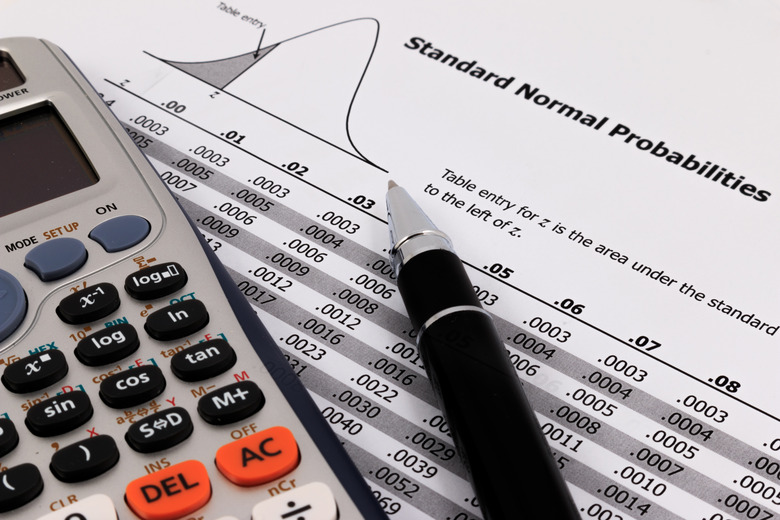How To Read A Bell Curve
Scores used in statistics can be hard to interpret, but one of the basic ways that statistics describes academic scores is with the bell curve, also known as the normal distribution or Gaussian distribution. Understanding this curve and how scores fall on it can make statistics much easier to interpret and understand. You may see T-scores, Z-scores, standard scores or even stanines reported. One thing they all have in common is that they are scores distributed on the same bell curve. The bell curve and its properties never change. The only thing that changes is a specific score and where it would fall on the bell curve. If you ever read a report with a score on it, make sure you find out the type of score it is. Once you know that, you should be able to look at the bell curve to see what the score really means.
Step 1
Look at the symmetrical shape of a bell curve. The center should be where the largest portion of scores would fall. The smallest areas to the far left and right would be where the very lowest and very highest scores would fall.
Step 2
Read across the curve from left to right. The curve is typically broken down into sections. Each section represents the portion, or percentage, of scores that would fall at that point on the curve. The first, or smallest, section might only represent a few scores. The largest portion of the scores would be in the two sections nearest the center, where 68.26 percent of the scores would fall. All the percentages for the different sections add up to 100 percent, with 50 percent falling on each side of the curve. The left of the curve represents scores that fall below the average and the right side represents scores that fall above the average.
Step 3
Look for a line labeled "standard deviations." The standard deviation is the key to interpreting scores that fall on the bell curve. The standard deviation is how many scores are disbursed in that section of the curve. Different types of scores have different standard deviations. For example, a standard score usually has a standard deviation of 15, and a T-score always has a standard deviation of 10.
Step 4
Find out the type of score your are looking at. A score may seem good, but you have to know what type of score it is to really know. For example, people are used to 100 being a good score because that stands for a perfect score in school. A score of 60 then would be considered a bad score. If that 60 is a T-score, however, it is above average for whatever it is measuring.
Step 5
Read down the side of the bell curve to find the types of scores. Look across the line for that type of score. The T-score that falls on the mean is 50, while the z-score is zero. Many scores that are reported are called "standard scores." Standard scores have an average of 100. So a standard score of 100, a T-score of 50 and a Z-score of 0 all mean the same thing because they all fall at the same point on the bell curve. Another way of putting it is that a standard score of 100 would convert to a T-score of 50.
Cite This Article
MLA
Contributor, . "How To Read A Bell Curve" sciencing.com, https://www.sciencing.com/read-bell-curve-5386369/. 8 November 2009.
APA
Contributor, . (2009, November 8). How To Read A Bell Curve. sciencing.com. Retrieved from https://www.sciencing.com/read-bell-curve-5386369/
Chicago
Contributor, . How To Read A Bell Curve last modified March 24, 2022. https://www.sciencing.com/read-bell-curve-5386369/
